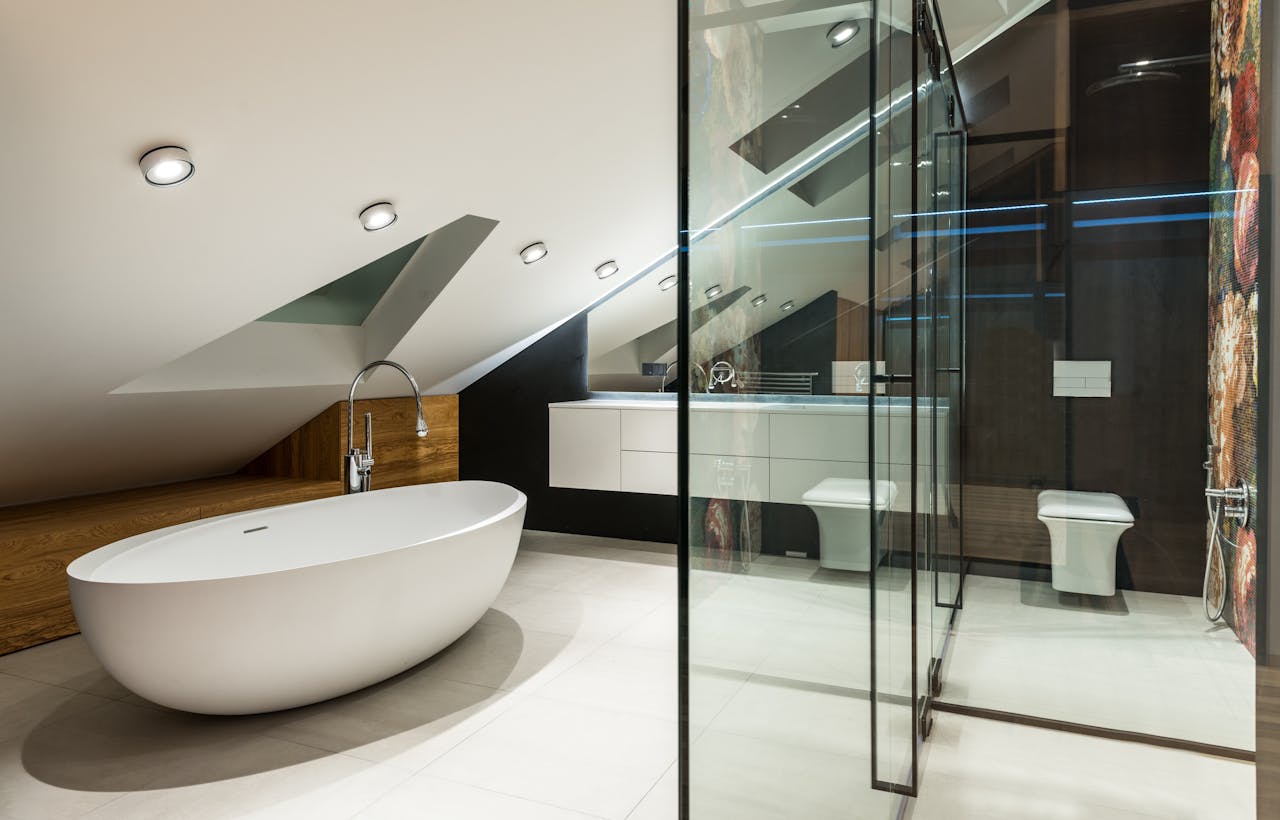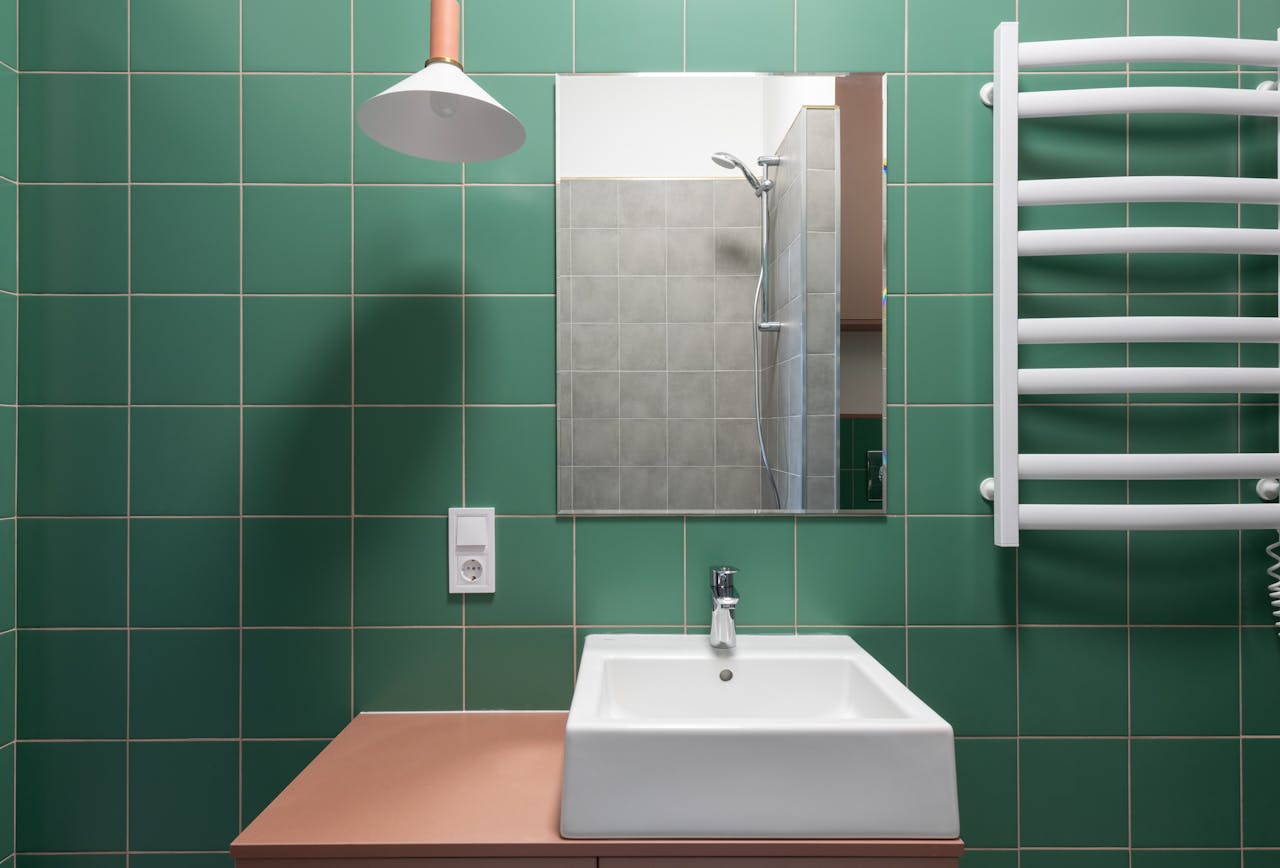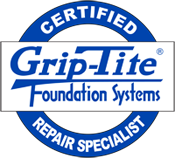
Key Takeaways
- And as with any major project, careful planning is the key to avoiding costly mistakes. Create comprehensive plans and protocols to avoid garage remodeling troubles right from the start!
- Tip #4: Have a realistic budget with contingencies. Keep a close eye on your costs during the entire process to avoid breaking the bank and going over budget on your remodel.
- Getting all required permits and understanding local building codes from the start keeps your garage remodel above board and will save you from legal or timeline issues later.
- Make sure to choose quality, experienced contractors to make the most of your garage renovation. This is why investing in the best quality materials increases their long-term value.
- Focusing on the technical details first improves the comfort, safety, and usability of your garage space. Don’t overlook the importance of insulation, ventilation, electrical planning, and climate control!
- Building adaptability into your plans makes sure your remodeled garage will be able to accommodate new needs as they arise in the future. Warranty protection and maintenance further protect your investment.
Regardless of the reason, here are the most common garage remodeling mistakes—and how you can avoid them.
Many make the mistake of choosing storage units that don’t work with the space or purchasing things without measuring first. Some make the mistake of using materials that are not moisture resistant, allowing for deterioration and destruction.
Inadequate lighting and poor electrical wiring are two commonly neglected features, making the garage difficult to utilize as a workspace or functional storage area.
In order to save yourself from these common mistakes, begin with a clear plan, measure the area, select storage that serves your purpose, and use durable materials. Good lighting and safe, up-to-code wiring contribute to the space’s value as well.
Our garage remodel series will outline the process and provide pointers for an easy garage remodel.
Common Garage Remodeling Mistakes
The common pitfalls of garage remodeling result in lost time, increased expense, and unsatisfactory outcomes. The majority of mistakes stem from a lack of planning, bad budget management, neglecting permits, or not hiring the right talent and materials. With a little planning, these common mistakes can be avoided, and any garage can be transformed into a functional, comfortable space.
1. Skimping Planning
Rushing into a garage renovation without a plan is one of the most common remodeling mistakes. Many projects fail because owners rush in, missing key details. A comprehensive site plan allows you to visualize changes in their entirety, providing the opportunity to avoid overlooking key elements.
So, give yourself time to think and write down every idea. Go back and iterate on what you envision for the garage space. Consult with your professionals—builders, architects, or designers—so that your vision is well-defined and appropriate.
Create a plan with a checklist to monitor key steps, such as measuring, ordering materials, and scheduling work. Our list helps you maintain that momentum.
2. Ignoring Budget
Decide on a budget and stick to it. Too many people underestimate their costs, or in the case of DIY work, the work can extend into infinity and cost even more. Include all possible expenses: labor, materials, permits, and tools.
Always budget for additional costs, as surprises will come. Break down your budget by researching the average garage remodel costs in your area and get competitive. Arm yourself with this knowledge to establish clear parameters to avoid going over budget.
It’s important to keep a close eye on your spending as the project progresses.
3. Skipping Permits
Permits are not a suggestion. Avoiding them can result in large fines or having to tear out work that doesn’t pass inspection. Each area has different requirements, so be sure to find out what is required before you begin.
Don’t wait to apply for permits—doing so can add significant delays to your project timeline. Partner with a well-respected contractor who is familiar with the codes.
Make sure to keep copies of all permits, should you ever need to provide them for appraisals or future repair work.
4. Choosing Poorly
Enlist a skilled professional to help with the remodel. Check out their completed projects. Get recommendations from other local remodelers to find the best names.
Don’t hurry the process.
5. Using Subpar Materials
Better quality materials last longer and are more aesthetically pleasing. Low-quality cabinets or make-shift, mismatched pieces usually don’t last long. This goes for storage, flooring, and insulation as well.
Consult with professionals to help determine what will best suit your needs and budget. Avoid using scraps or leftovers just for the sake of saving a few bucks.
Flawed Project Foundations
A successful garage transformation begins with an understanding of your goals and a solid foundation. So many missteps occur in these early stages, at great financial cost, effort expended for a lackluster outcome, or worse yet, an unsafe condition. Thoughtful planning—from overarching big-picture goals and objectives down to better technical details—helps keep the project on track and avoids major pitfalls.
Unclear Vision
Failing to clearly define the core purpose of your garage will lead to perpetual edits and misalignment. Storage, workshop, gym, or parking—all require completely different floor plans and functionalities.
Devote time to envisioning what you hope the garage will look and feel like once completed. Draw or design layouts with modeling apps to plan areas for equipment, machines, or collections. Flipping through renovation periodicals or globe design websites can generate suggestions that you would not intend to think of yourself.
Engage with your builders or architects as early as possible. They can identify flaws in your approach, such as over-allocating space to cars or neglecting necessary space for storage. Their feedback helps ensure your vision is actionable, and you prevent future regret.
Budget Gaps
It’s easy for many first-timers to miss an expense. Little improvements, like better lighting or insulation, or more outlets, cost a lot. Inventory everything – materials, labor, necessary permits, and finishing touches.
Safety features and quality insulation should never be optional, particularly for those who call home in places where temperature extremes are common. Create a contingency fund, 10–15% of your total budget, for unexpected costs.
Monitor your expenditures regularly and revise your plan as necessary if costs fluctuate. Having your contractor on the team prevents miscommunication and ensures everyone is working towards the same goal throughout the project.
Permit Oversights
Failing to obtain the proper permits can delay your project or result in costly penalties. Create a list of each permit you will require—such as electrical, structural alterations—according to your blueprint.
Obtain and apply for necessary permits early on. Local building codes are very dynamic! Follow along and always check with your local district office if you are ever in doubt about a particular rule.
Put all permits and approvals in one physical location where you can easily produce them if called for.
Weak Foundation Planning
Missing a good design for aesthetics can lead to expensive retrofits down the line. Assuming the previous framing will be sufficient to support drywall or new shelving without cracking or sagging typically fails.
If you intend on adding large features, such as a stone waterfall, inspect the foundation and framing with a qualified professional. Using cheap materials can save money upfront, but lead to increased expenses in the long run.
Insulation should match your garage’s new purpose—workshops require more than basic storage. Provide enough wiring and outlets at the outset, considering future needs for power tools or EV charging stations.
Critical Design Oversights
A garage conversion is one of the most impactful improvements that can add value and usefulness to a home. Cutting critical design corners can result in lost federal funds, disastrous user experience, and potentially legal nightmares. Many errors arise from poor design considerations. They are equally born from a failure to appreciate technical requirements or a disregard for the minutiae that create an environment that is functional and welcoming.
Inefficient Layout
Additionally, a thoughtful garage layout is important. Too many homeowners embark on a project without well-organized plans, leading to tight pathways, obstructed access, and corners that aren’t utilized. Look at the layout and operations before picking up a wrench.
Plan where vehicles, equipment storage, and staging areas will be located. Use design software to lay out your various options, or reach out to a designer if you’re not confident in that work. Creating designated zones for parking, tool storage, or a workbench for a hobby can prevent the space from becoming cluttered.
Without this, even the most costly upgrades will be inadequate. Never ignore local building codes and requirements for permits before constructing—doing so can result in fines or an expensive rebuild.
Inadequate Lighting
Inadequate lighting is a typical design oversight. Garages usually have one central ceiling bulb, which makes it impossible to utilize a workspace with dark corners. Replacing dim incandescent lights with bright LED bulbs can make a huge difference in the look and use of the space.
Wherever you can, introduce windows or skylights to allow natural light to flood the space. Lighting the majority of the space by day allows for safer and more enjoyable everyday use. Include task lighting over benches or laundry stations to facilitate detailed tasks.
Dimmable fixtures are a great way to customize the mood if the space serves as a fitness studio or lounge.
Neglected Storage
Failing to plan for storage creates chaos and consternation. It can help to begin by making a list of what you’ll want to store—maintenance tools, bikes, seasonal gear, or supplies. Custom cabinetry or shelving units that go all the way up the wall take advantage of vertical space.
Cutting corners on quality to save a few bucks is the number one way to be disappointed—cheap cabinets will sag under the weight or break. Consider planning for future use, not just the immediate past use that’s currently in storage.
With proper organization, everything is conveniently stored and accessible. Remember to include insulation and ventilation if you’ll be keeping paint, electronics, or other sensitive items in storage.
Ignoring Aesthetics
Ignoring aesthetics is a common mistake. Aesthetics are important. Choose colors, materials, and finishes that are compatible with your home’s architectural style.
Consider some easy-to-decorate items such as decorative wall hooks or framed artwork to add a little flair and personality. Go for a design that complements your overall home style.
Even a small amount of tasteful green space around the garage will go a long way in providing curb appeal.

Execution Phase Hurdles
Garage remodels are particularly prone to issues during the execution phase. Most problems are the result of poor foresight, choosing the wrong support, or choosing subpar materials. Some results from homeowners attempting to go above their skill level or completely avoiding steps, for example. Avoiding these hurdles and knowing how best to sidestep them will save plenty of time, money, and future headaches.
Wrong Contractor
Picking the wrong contractor may be the second most significant risk. Begin by interviewing multiple professionals, rather than just one, and inquire about their experience with garages in particular. Some contractors might be great at kitchen or bath buildout, but don’t have the experience for garage framing or insulation.
Look them up online to verify their licenses and request to see photos or references from recent projects. Provide written estimates with specifics spelled out. These should include timelines, costs, warranties, and the scope of work.
Look beyond the bottom line. Compare more than just the price, but what’s included—some estimates leave out preparation work or clean up. Ultimately, you have to go with your instincts. If a contractor is evasive or brushes you off, move on.
Inferior Materials
This one is hard to believe, but true. Some homeowners go for inexpensive cabinets or laser-thin drywall. These materials aren’t able to provide the deflection and load-bearing capacity—they sag, break, and/or fail.
Identify replacement materials that can improve resilience, such as steel for limestone cabinets or moisture-resistant drywall. Inquire about warranties, and don’t shy away from challenging vendors or your general contractor on the expected lifespan of products.
Consulting professionals can assist in selecting materials that will best suit your garage’s intended purpose. For instance, if you’ll be regularly using power tools or heavy machinery, you’ll need sturdy shelving and finished floors.
Cutting corners on materials can lead to expensive maintenance and repairs in the future.
DIY Pitfalls
As fun and attractive as some do-it-yourself projects can be, experience and expertise count. Be real about whether or not you’re prepared to do the labor. Begin with smaller projects like painting a room or adding floating shelves before committing to anything that involves wiring or framing.
Most get in hot water on electrical, insulation, or structural modifications. Use online, step-by-step guides, video tutorials, and verify that you understand basics such as operating in metric and using safety standards.
I’ve been shocked to learn how many DIY remodels end up exceeding budget or timetable. Almost 40% of homeowners have been left wishing they had tried a DIY project after realizing how much work would be involved.
Understand when it’s time to call in a pro, particularly for electrical, HVAC, or structural work.
Communication Gaps
Don’t stop communicating with your contractor. Talk through any amendments at the outset and formalize them in writing. Request high-level updates consistently.
Keep participating.
Overlooking Technical Essentials
Garage conversions sometimes backfire when technical essentials are overlooked. Insulation, ventilation, electrical design, and climate control are essential if the garage is more than a storage unit. Bad planning in this area can result in spaces that are uncomfortable, unsafe, or expensive to retrofit in the future.
Poor Insulation
Most garages are not insulated, leading to uncomfortably hot temperature swings in summer and unwanted noise infiltration. In areas where a highly thermal envelope is required, use materials such as rigid foam or fiberglass batts. This prevents the garage from getting too hot in the summer and too cold in the winter.
If you use the garage as a workshop or gym, make sure to seal cracks and gaps. This will eliminate drafts and maximize your energy savings! Increasing acoustic insulation can significantly reduce high-frequency noise, resulting in a quieter place to work or pursue other interests.
We recommend choosing the insulation based on how you plan to use your garage. What works for basic shed storage is not going to suffice for an attractive, usable home or workspace!
Bad Ventilation
The biggest pitfall… Bad airflow is typically the biggest mistake. Some wall vents or an exhaust fan can help keep humidity down and prevent smells from developing. As much as possible, choose windows that can be opened.
This allows for natural ventilation, fresh air, and daylight, keeping the environment mold and mildew-free. Monitor humidity levels, particularly in damp or cooler climates.
Consider the floor plan arrangement for free airflow to circulate, preventing obstructed corners or cluttered storage.
Electrical Deficiencies
Over half of the remodeled garages required upgraded electric service. Itemize every potential use—charging power tools, operating a mobile mini-fridge, or using mobile heavy machinery. Old wiring and insufficient outlets are no longer acceptable, so modernize.
Follow all applicable safety codes, including federal, state, and local regulations. Electrical deficiencies add additional outlets and circuit design for additional lighting if you’ll be working or occupying it.
Planning for future needs now prevents heartache and expense down the road.
Ignoring Climate Control
Garage comfort takes a nosedive when you forgo climate control. Choose a heater or small air conditioner appropriate to your space and requirements. Energy-efficient models do help keep bills low.
Proper insulation and airflow are important elements of climate control. Be alert to sudden temperature changes—these can affect tools or stored equipment.
The Long-Term Remodel Impact
When it comes to a garage remodel, you’re not just improving your home’s appearance or increasing its resale value. It can improve your home’s value, improve your everyday comfort, and future-proof your property. When you plan with a long-term perspective, you can sidestep seven expensive blunders most people make.
This extends even to things like insulation and avoiding necessary permits! Those seemingly small decisions made in the short term can have long-lasting impacts on resale, maintenance, and future flexibility.
Future Adaptability
A wise remodel leaves possibilities available. This is a common source of regret, as many homeowners wish they hadn’t boxed themselves in with single-use layouts. Instead, work to incorporate sliding walls, open shelving, or mobile workbenches.
This allows you to relatively easily convert a gym into a workshop or turn a lounge area back into parking. If your remodel includes flexible lighting and outlets, it will be easier to add charging stations or workspace in the future.
Create a safety buffer in the budget—a minimum of 20%—for new requirements or technology that may be needed and will arise. Trends change; today’s hobby room may be converted to a home office in just a few months, so ensure flexible space and enough power for future improvements.
Garage conversions are difficult to heat to cool effectively. If you plan on livable space in the future, plan for additional insulation and vents now!
Resale Value
With the right selections, remodels can increase home value, and conversely, the wrong decisions can decrease it. Homebuyers still expect a garage to function well as a garage—parking and storage—not just as an auxiliary bedroom.
An expensive addition that eliminates all parking at a property—say an in-home office or playroom—might deter potential future buyers. Put your remodel dollars towards items with proven long-term resale value, such as replacing your garage door, which returns an average of 94.5% of your initial cost.
No one hates good lighting, intelligent storage, or easy-care floor coverings, after all. Keep a record of any work with photos and receipts so that buyers can see what’s been updated and up to code.
One important note—bypassing permits or federal and local building regulations is a serious gamble. Unpermitted work can result in hefty fines imposed or even requiring you to reverse the remodel. It’s better to know what’s required before you begin.
Ongoing Maintenance
With such a big investment made in the remodel, ongoing maintenance of the garage should be a priority. Consider how often you’ll need to clean and inspect for leaks, cracks, or pests.
Consider the longevity of materials. When selecting materials that are more durable (such as steel doors or epoxy floors), consider the costs of replacement and maintenance.
Professionally inspect insulation and ventilation regularly—homeowner comfort and indoor air quality hinge on the two. Get educated on how to maintain each aspect, and remember that regular maintenance now can prevent major repairs down the road.
Warranty Neglect
Check all warranties on doors, flooring, and installation labor before acceptance. Store documents where they will be easily accessible.
Remind yourself to check periodically, as some warranties require evidence of maintenance. Repair issues promptly—delaying repairs may result in loss of coverage.
Conclusion
Garage remodels require detailed plans and careful attention to the minutiae. In a hurry, they fail to follow the procedure, use the wrong tools, or forget to do important checks such as wiring or airflow. Making the right decisions from the beginning will help avoid spending a lot of extra money and undue stress down the road. Choose durable storage, monitor power requirements, and address any water damage immediately. Consider your goals for the space—workshop, gym, or simply extra space. Do your best to learn from those who have succeeded before you or consult an expert who knows their business. Your garage has the potential to be so much more than an oversized car holder. Looking to create a smart garage of your own? Post your design idea or request for advice in our forum of Garage Enthusiasts. Share your hard-won experience below, and let’s all make garage projects easier and avoid the common pitfalls.
Frequently Asked Questions
1. What Are The Most Common Mistakes In Garage Remodeling?
The most common mistakes include poor planning, ignoring structural issues, skipping permits, poor lighting, and overlooking storage needs. Nailing these down from the start will make for a much smoother project and a more successful space.
2. How Can I Avoid Design Mistakes During A Garage Remodel?
Begin with a well-defined plan of action. Hire an expert, rely on correct measurements, and give consideration to form and function. This way, you can avoid the expensive reconfiguration down the line.
3. Why Is Proper Ventilation Important In A Remodeled Garage?
Proper ventilation keeps moisture from accumulating, which can lead to mold and other issues, including compromised air quality. Make sure you install vents or windows so that the space—no matter what you ultimately decide to use it for—stays healthy and comfortable.
4. Do I Need A Permit For My Garage Remodel?
Do I need a permit for my garage remodel? To avoid costly fines and work delays, always consult local regulations and obtain necessary approvals before starting work.
5. How Can I Maximize Storage Space In My Garage Remodel?
Install vertical shelves, wall hooks, and cabinets to store tools and gardening equipment. Develop a storage plan from the outset so you can make the most of every inch of space.
6. What Technical Essentials Should I Focus On During Remodeling?
Make sure your electrical wiring is safe, insulation is on point, and lighting is adequate. Engage licensed professionals for all technical work performed to ensure safety and compliance.
7. What Long-Term Factors Should I Consider Before Remodeling My Garage?
Select durable materials, have the future in mind, and keep things accessible. This not only protects your investment, but it ensures your garage continues to serve your needs for many years down the road.
Your Dream Home Starts With Mares & Dow Construction – Let’s Create Something Amazing Together
Planning a home renovation or construction project in Concord, Walnut Creek, Pleasant Hill, or Lafayette? Whether you’re dreaming of a stunning kitchen remodel, a durable new deck, or a full-scale home renovation, choosing the right general contractor is the most important decision you’ll make.
With over 40 years of experience, our team at Mares & Dow Construction & Skylights has built a reputation for quality craftsmanship, transparent pricing, and exceptional customer service. We specialize in:
- Home Remodeling – Transform outdated spaces into modern, functional, and energy-efficient areas that increase home value.
- Decks and Outdoor Living Spaces – Create the perfect outdoor retreat with expertly crafted decks, pergolas, and patios.
- Foundation Repairs and Waterproofing – Protect your home’s structural integrity with our professional solutions.
- Custom Skylight Installations – Enhance natural light with innovative skylight solutions from a VELUX 5-Star Skylight Specialist.
- General Contracting Services – From new builds to home additions, our skilled team manages every aspect of your project with precision.
Serving Contra Costa County, including Alamo, Danville, Orinda, Martinez, and San Ramon, we take pride in delivering exceptional results that exceed expectations. Whether you’re a homeowner planning a renovation or a property investor looking to enhance a home’s resale value, we ensure your project is completed on time, within budget, and with the highest level of craftsmanship.
Don’t settle for anything less than the best for your home remodeling, renovation, or construction needs. Contact Mares & Dow Construction & Skylights today for a free, no-obligation quote, and let’s bring your vision to life.
Disclaimer
The materials available on this website are for informational and educational purposes only and are not intended to provide construction, legal, or professional advice. You should consult with a qualified general contractor or industry professional for advice concerning any specific construction project, remodeling plan, or structural concern. Do not act or refrain from acting based on any content included on this site without seeking appropriate professional guidance. The information presented on this website may not reflect the most current building codes, regulations, or industry best practices. No action should be taken in reliance on the information on this website. We disclaim all liability for actions taken or not taken based on any or all of the contents of this site to the fullest extent permitted by law.











 based on
based on 

